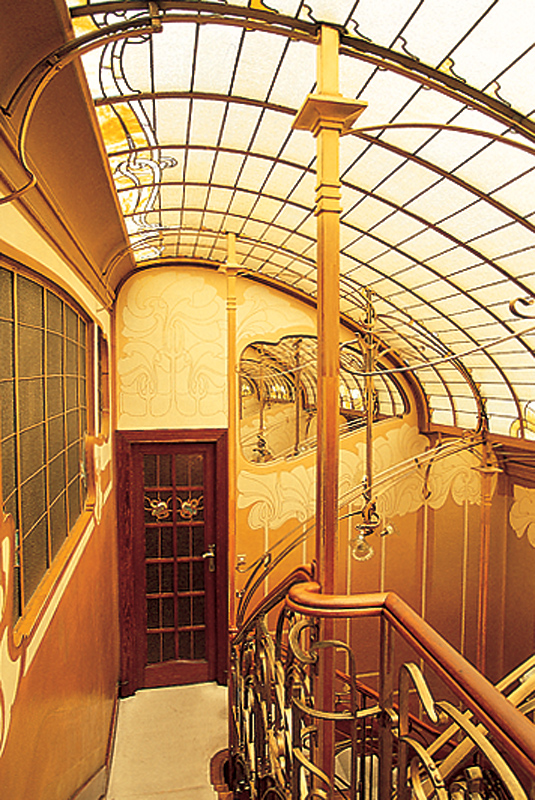< Top 10 of Brussels, Bruges Antwerp & Ghent
 Musée Horta, Brussels
Musée Horta, Brussels

In the late 19th century, Brussels was a centre for avant-garde design, and a rapidly growing city. To feed the market for stylish mansions, architects scavenged history for ideas; the result was the so-called “eclectic style”. In 1893, the gifted architect Victor Horta created a totally new style – later labelled “Art Nouveau” – full of sensuous curves and artistic surprises, elaborated with wrought iron, stained glass, mosaics, murals and finely crafted woodwork. Horta brought this style to full maturity when he built his own house – now the Musée Horta.
Top 10 Features
 The Building
The Building
When designing for his clients, Horta liked to tailor the house accordingly to how they lived. His own house has two distinct parts: on the left (from the outside), his residence; on the right, his offices and studio.
 The Staircase
The Staircase
The interior design hangs on a central stairwell, lit from the top by a large, curving skylight. The ironwork bannisters have been given a typically exuberant flourish.
 Structural Ironwork
Structural Ironwork

In what was considered a bold gesture at the time, Horta used iron structures to support his houses. He even made a virtue of it, by leaving some of the iron exposed and drawing attention to it with wrought-iron embellishments.
 Fixtures and Fittings
Fixtures and Fittings
Horta was an ensemblier: he liked to design an entire building in all its detail, down to the last light fixture, door handle and coat hook. This attention to detail conveys the impression of complete architectural mastery: nothing is left to chance.
 Furniture
Furniture
In addition to door handles and coat hooks, Horta also liked to design the furniture to go in his houses. Although it bears a definite Art Nouveau stamp, Horta’s furniture tends to be simple, restrained and practical.
 Leaded Glass
Leaded Glass
The nature of leaded glass – glass shapes held together by lead strips – stimulated the artistic flair of Art Nouveau architects. It appears at various points in the house – notably the door panels and stairwell skylight.
 Mosaics
Mosaics
The sinuous lines of Art Nouveau design in the mosaic tiling of the dining room floor help to soften the effect of the white-enamelled industrial brick lining the walls.
 Woodwork
Woodwork
There is a note of austerity as well as luxury in Art Nouveau design. The richly carved wood in the dining room is left natural, allowing the quality of the wood to speak for itself.
 Art Nouveau Sculpture Collection
Art Nouveau Sculpture Collection
Throughout the museum are several fine sculptures by late 19th-century Belgian artists. Look out for La Ronde des Heures, in the rear salon on the first floor. This intriguing little bronze was created by Philippe Wolfers (1858–1929), a leading Art Nouveau jeweller and silversmith who worked with Horta.
 Scale Model of the Maison du Peuple
Scale Model of the Maison du Peuple
Although few have survived, Horta was well-known for his designs for commercial and public buildings. The La Maison du Peuple was an innovative cast-iron structure built for the Société Coopérative in 1895. A scale model of it can be seen in the cellar.
Tip: The Musée Horta is at the heart of a cluster of Art Nouveau buildings. Key streets include Rue Defacqz, Rue Faider and Rue Paul-Émile Janson. Hôtel Hannon is also close by.
Tip: There are several interesting bars and cafés nearby, around Place du Châtelain. For a spot of good-value lunch before the museum’s 2pm opening hour, try the charming La Canne en Ville; for somewhere with real design flair, head for the extraordinary Quincaillerie, which dates from 1903.
Victor Horta
Visitor Information
- Rue Américaine 25, Brussels 1060 (Saint-Gilles)
- 02 543 04 90
- www.hortamuseum.be
- Open 2–5:30pm Tue–Sun. Closed Mon, public hols
- Admission: €7
